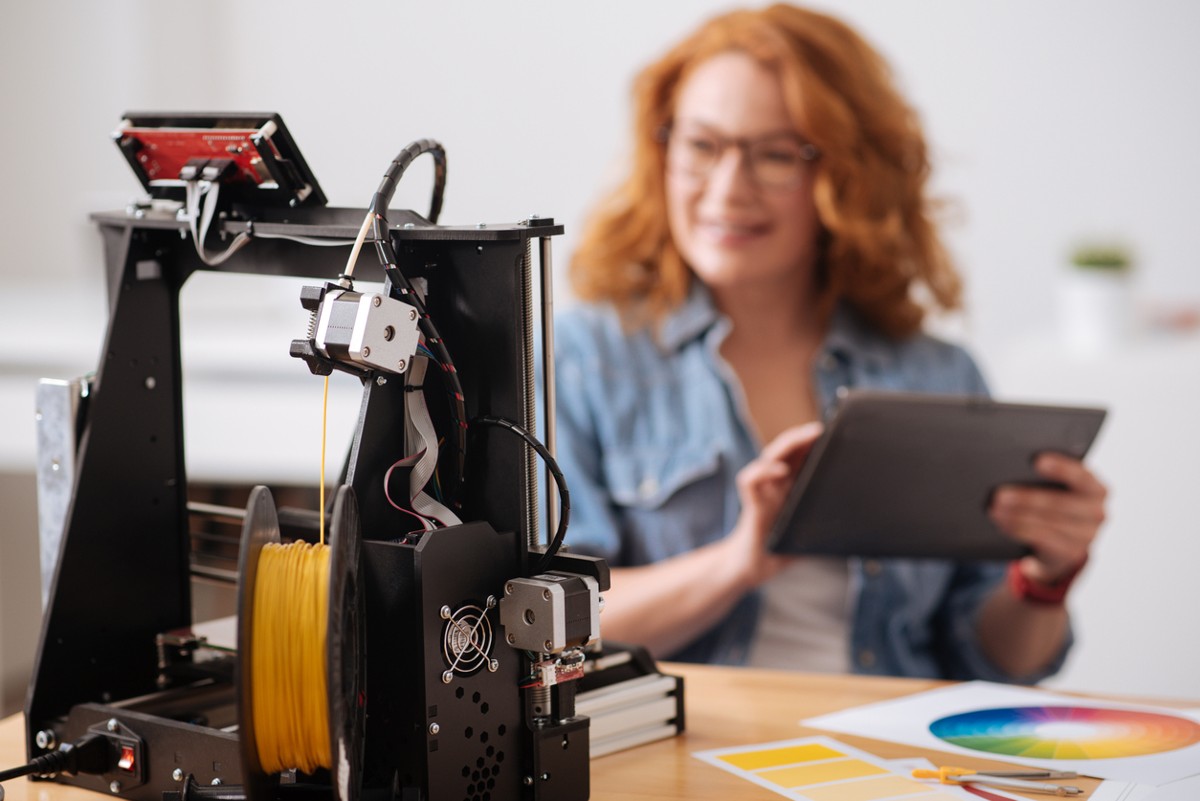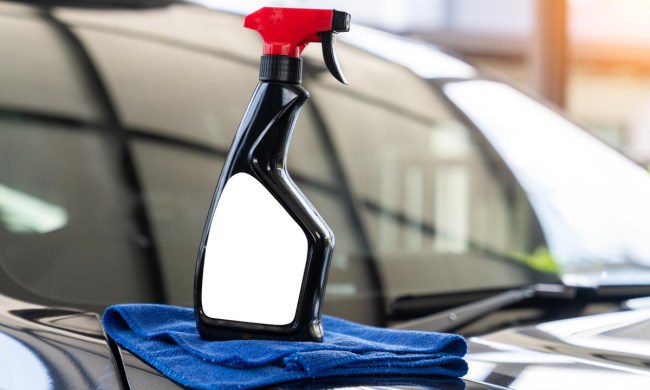
A great 3D printout starts with the right filament. Each type of filament has its own unique properties, including strength, flexibility, temperature resistance, and ease of printing. They also come in different colors and diameters to suit different printing needs and preferences, so it’s important to know what you’re looking for when making a selection.
We reviewed the best 3D printer filaments of 2024 to help you find options made from quality materials, while also helping you ensure compatibility with your specific printer. The PLA 3D filament from 3DFilaments is our top choice because it’s made of high-quality polylactic acid and provides a smooth experience free of clogs, bubbles, and tangles.
The best 3D printer filaments
3DFilaments 3D printer filament – Best overall

Print out some amazingly detailed 3D figures with 3D printer filament from 3DFilaments. It’s engineered for precision and performance, as it can give you incredibly accurate and smooth 3D items compared to other brands. Offering premium quality materials, this brand creates filament that is durable and long-lasting, so your 3D creations will look amazing for years to come. The 1.75mm filament is bubble-free, clog-free, and tangle-free with no warping to ensure consistent feed through the printer for a smooth, beautiful print finish.
The dimensional accuracy is off the charts, with an accuracy of +/- 0.02mm for precise printing in a wide range of industrial applications. The filaments are packaged safely to ensure no moisture will get in and ruin the material during shipping. It’s also protected against dust, dirt, and particles so you don’t have to worry about printer nozzle jams and can await a perfect finished product. That’s why this is the best overall product on our list.
Pros:
- Feeds through the printer nozzle with ease
- Won’t warp, clog, tangle, or bubble
- Industry-leading dimensional accuracy
Cons:
- Colors may vary from images
Luftzeuge 3D printer filament – Most vibrant

The Luftzeuge 3D printer filament provides superior performance and incredible results for any 3D printing project. The four vibrant colors included in the bundle are guaranteed to make your projects stand out: red, black, white, and blue. With unbeatable ease of use and no tangling or warping, this filament can help you create impressive figurines, prototypes, gifts, toys, and novelty items.
The smooth printing capabilities of this printer filament provide accuracy and outstanding results without bubbles or clogging. Plus, its powerful PLA 1.75mm diameter makes it compatible with 99.9% of all FDM 3D printers including those with a dimensional accuracy +/- 0.03mm. Because it is made with the highest quality 100% bio-based materials, you get unbeatable durability and strong bonding for any custom printing project.
Pros:
- Vibrant 4-color bundle
- Smooth and precise printing
- Great for intricate designs
Cons:
- Has a tendency to tangle
Gizmo Dorks 3D printer filament – Great value

Slowly yet steadily, more and more individuals have started converting to PLA 3D printer filament as opposed to the more conventional ABS filaments. This is mainly due to PLA (polylactic acid) being a greener, environment-friendly plastic derived from sugars instead of plastic. And our recommendation when it comes to PLA 3D printer filament has to be the colorful Gizmo Dorks 3D printer filament, especially because of the sheer volume available in one spool.
Each spool weighs about 200g, is available in blue, orange, green, or red, and has a filament diameter of around 1.75mm, give or take. As a bonus, PLA filament is compatible with some of the top 3D printers available worldwide, such as the Creality Ender 3, Anycubic, flash forge, and Prusa.
Pros:
- Creates detailed, high-quality prints
- Compatible with various printers
- Excellent value for the cost
Cons:
- Somewhat brittle
Overture 3D printer filament – Most options

The Overture 3D printer filament offers a range of features to ensure high-quality and hassle-free 3D printing experiences. Through the use of CCD cameras and closed-loop controls, the extrusion process is continuously monitored and adjusted in real time, ensuring precise dimensional accuracy with a filament diameter of 1.75mm and a tight tolerance of +/- 0.02mm.
Utilizing a patented clog-free formula, the filament is designed to prevent clogs and bubbles, guaranteeing a smooth and seamless printing process. Each spool undergoes thorough drying for 24 hours before packaging and is vacuum-sealed to preserve quality. Additionally, meticulous winding and manual inspection result in tidy, tangle-free filament, with larger inside diameters minimizing friction for smoother feeding. These filaments are compatible with most consumer and industrial 3D printers and come in a wide selection of vibrant colors, providing endless possibilities for creative projects.
Pros:
- Various rich colors to choose from
- Works well on any PLA setting
- Quality materials and precision
Cons:
- May have adhesion issues
Hatchbox 3D printer filament – Most versatile

Designed for creativity and convenience, the Hatchbox 3D printer filament offers a hassle-free printing experience. With a 1 kg spool and 1.75 mm filament diameter, this PLA filament ensures dimensional accuracy with a tolerance of +/- 0.03 mm, suitable for mainstream printers with recommended extrusion temperatures ranging from 180°C to 210°C. Novice users will find it easy to get started with basic settings, while seasoned printers can push the boundaries of their designs with confidence, thanks to the filament’s quality and consistency.
This 3D printer filament is formulated to be clog, bubble, and tangle-free, minimizing warping and odor without requiring a heated bed. Vacuum-sealed with desiccant to prevent moisture absorption, it delivers high-detail resolution for a wide range of applications, from art and design to prototypes and models. Trusted by the 3D printing community, this brand is renowned for producing top-quality PLA filaments with the largest selection of colors at an unbeatable price, making it the go-to choice for 3D printing enthusiasts.
Pros:
- Brilliant colors with a subtle sparkle
- Prints precisely and easily
- Won’t warp or clog the nozzle
Cons:
- Not compatible with auto-refill functions
MIKA3D printer filament – Best variety

MIKA3D’s 3D printer filament offers a unique and diverse selection of 24 colors, including 3 metal colors, 6 transparent colors, and 15 various normal colors, making it an excellent gift for 3D printing enthusiasts. Manufactured with high-quality PLA raw material imported from the USA, this filament is produced in a dust-free workshop, ensuring premium quality control.
With a high diameter accuracy of +/-0.03mm, this filament provides smooth and easy 3D printing performance. It boasts strong compatibility with most 1.75mm 3D pens and printers on the market, and as an extra gift, includes 2 silicone finger caps for use with 3D pens. This 3D printer filament is designed to meet the needs of both hobbyists and professionals, offering reliability and versatility for a wide range of creative projects.
Pros:
- Fun and affordable assortment
- Melts at a fairly low temperature
- The 2 finger caps are a bonus
Cons:
- May be too big for some pens
Priline printer filament – Wide compatibility

This 3D printer filament from Priline offers high-quality printing performance with its carbon fiber polycarbonate material in solid black, weighing approximately 2.20 lbs per spool. With a filament size of 1.75mm and a tight tolerance level of 0.03mm, it ensures precise and consistent printing results. The spool dimensions of 7.87 inches in diameter, 2.83 inches wide, and a hub hole diameter of 2.20 inches make it compatible with most 3D printers.
Recommended printing temperatures range from 240-260°C for the nozzle and 80-100°C for the base plate, ensuring optimal printing conditions. This 3D printer filament offers several performance advantages, including perfect dimensional stability for warp-free printing, excellent layer adhesion, and easy support removal, making it ideal for a variety of printing projects.
Pros:
- Produces strong and precise results
- Has a beautiful matte finish
- Easy to use without requiring reprints
Cons:
- The spool may not be uniform
Amolen 3D printer filament – Most unique

Amolen offers a unique glow-in-the-dark filament that adds a captivating touch to your 3D-printed models. Simply expose your finished print to sunlight or UV light for 30 minutes, then watch it glow in the dark. The Glow Green filament appears transparent and white with spots when not glowing, transforming into a vibrant green glow after charging, perfect for creating decorations for various occasions.
With high manufacturing standards and a small diameter tolerance of +/-0.03mm, this filament ensures compatibility with most FDM 3D printers and pens, minimizing tangles and ensuring smooth printing. Made from PLA raw materials sourced from the USA, it comes in a 1.75mm diameter and 1 kg spool size. It’s recommended to print at temperatures ranging from 190°C to 220°C and a heat bed temperature between 0°C and 50°C. The professional packaging includes vacuum-sealed bags with desiccants to keep the filament dry and dust-free, with reusable sealed strips for convenient storage after use, maintaining its quality over time.
Pros:
- Adds a unique touch to prints
- Provides superior adhesion
- Good vacuum-sealed packaging
Cons:
- Glow could be brighter

Best 3D Printer Filaments Buying Guide
Without the Filaments, a 3D Printer Is Nothing but a Basic 2D Printer.
Unlike before, the ability to print 3D-print is now available to everyone. Filaments for 3D printers are typically made from thermoplastics. Once fed through the extruder, they melt and cool on the bed of the 3D printer to form a solid 3D object.
Filaments are available in several colors, can be formed into different shapes, and are majorly available in thickness ranges of 1.75 millimeters and 3 millimeters.
Our previous discussion showed you the best 3D printer filaments. However, this guide aims to show you factors to consider before purchasing filaments for 3D printers. The benefits of 3D printers, the cost of 3D printer filaments, and applications of 3D printer filaments will also be discussed.
What Are 3D Printers, and What Is 3D Printing?
3D printing is the most popular form of additive manufacturing and is accomplished using 3D printers. These printers can produce 3-dimensional objects using a digital file from the computer. This feat is achieved when the extruder feeds successive layers of material layer-on-layer.
What Are the Benefits of 3D Printing?
First, 3D printers have the advantage of producing 3-dimensional objects within the shortest possible time. This facilitates prints on-demand, the rapid development of prototypes, and fast production.
3D printers also give businesses a competitive advantage over counterparts as they are cost-effective. These printers are very flexible manufacturing tools. Products’ shapes and designs can be changed without you needing to change the equipment as long as the object fits into the volume of the 3-D printer.
As 3D printers also use additive manufacturing, there’s no need to worry about material wastage when producing complex parts. They are also more accessible in comparison to other manufacturing tools.
What Are the Factors to Consider Before Buying a 3D Printer Filament?
Application
The purpose of the 3-Dimensional printer filament will determine what type of filament you will need. Suppose your final product is to be subjected to high-stress applications. In that case, you will need a filament that withstands harsh weather, chemicals, and even heat.
Also, if the final product is for commercial purposes, professional materials will be required. This way, you can produce complex shapes since the filaments will be flexible, durable and will allow you to apply professional finishes to the object.
Type of 3D printer
Before purchasing a 3D printer filament, one factor that needs to be considered is the type of 3D printer you own. 3D printer filaments should not be used with just any 3D printer but only those they are compatible with. The reason for this is related but not limited to the melting temperature of the 3D printer filament.
A typical example is a Nylon filament that melts at 240 degrees Celsius. Many 3D printers are not built to generate those melting temperatures.
Durability and melting temperature
Another important consideration is the durability of the 3D printer filament. The durability of the filament will be determined by its intended purpose and working environment.
The melting temperature of whatever filament you choose is another important factor to consider and will determine if your printer is compatible with it. It should melt at a temperature that’s way below the melting temperatures the printer can generate.
Size of the filament and 3D printer
3D printer filaments typically come in two sizes – 1.5mm and 3.0 mm spools. Before purchasing a filament, it is crucial you know if your 3D printer supports the filament size you are about to buy.
The size of the filament also determines the flexibility and strength of the part you want to produce.
Material availability
The availability of whatever filament you will be using for your 3D printing project is also essential. You shouldn’t pick a 3D printer filament that will be hard to get since its scarcity will only make it more expensive to repurchase.
Safety consideration
Several filaments, when melted, produce toxic gases and smell bad.
When using these materials, your safety should be your absolute priority. Check the product descriptions to ensure that the 3D filament you choose is safe to handle and doesn’t produce these harmful by-products.
How Much Do Filaments for 3-D Printers Cost?
PLA and ABS filaments cost around $25 per kg.
The cost of the filaments is one last consideration that is very vital. Each 3-D printer filament varies in price. It wouldn’t be advisable for a beginner to purchase expensive filaments or for you to buy costly filaments for prototypes. The only exception to this is when the prototype needs to be resistant to certain chemicals, heat and withstand certain stress levels that simulate real-life expectancies.
What Are the Best 3D Printer Filaments for Beginners and Professionals?
Professionals are always in search of the best methods for 3-dimensional printing. If you are a veteran at using 3-D printers, you should have little or no issues working with filaments that are considered hard to print.
Some professional filaments include PP, ABS, PA, and TPU. Others have PPGF30 or PAHT CF15 labels. These selected filaments handle complicated designs with ease.
A beginner, on the other hand, has little or no experience with 3-dimensional printing. We recommend PLA because it is easy to print and cheaper than many of the other filaments.
People Also Ask
What is the strongest filament?
The strongest 3-D printer filament is Polycarbonate (PC). It boasts of a tensile strength of 9,800 psi. With this tensile strength, it is the perfect filament for products that require high strength. Additionally, PC can withstand more heat than any other polycarbonate.
Can you 3D print Kevlar?
Yes, it is possible to 3D print Kevlar. However, 3D printing Kevlar is expensive, and you will need a wider printer nozzle (typically above 4mm). Additionally, be careful and ensure that you are following every safety measure because Kevlar has a very high melting point, so you will need a printer that can withstand these temperatures.
What Materials cannot be 3D printed?
Wood, paper, rocks, and fabric cannot be 3D printed for one particular reason. They will burn before they melt and extrude through the nozzle of the 3D printer.


